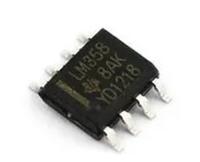PRELIMINARY TECHNICAL DATA
For current information contact Analog Devices at 800/262-5643
August 2003
ADSP-21262
Power Supplies
real-time characteristics of the program. Essentially, the
The ADSP-21262 has separate power supply connections for the
internal (VDDINT), external (VDDEXT), and analog (AVDD/AVSS
power supplies. The internal and analog supplies must meet the
1.2V requirement. The external supply must meet the 3.3V
requirement. All external supply pins must be connected to the
same power supply.
developer can identify bottlenecks in software quickly and effi-
ciently. By using the profiler, the programmer can focus on those
areasintheprogramthatimpactperformanceandtakecorrective
action.
)
Debugging both C/C++ and assembly programs with the
VisualDSP++ debugger, programmers can:
Note that the analog supply (AVDD) powers the ADSP-21262’s
clock generator PLL. To produce a stable clock, you should
provide an external circuit to filter the power input to the AVDD
pin. Place the filter as close as possible to the pin. For an example
circuit, see Figure 3. To prevent noise coupling, use a wide trace
for the analog ground (AVSS) signal and install a decoupling
capacitor as close as possible to the pin. Note that the AVSS and
AVDD pins specified in Figure 3 are inputs to the DSP and not the
analog ground plane on the board.
• View mixed C/C++ and assembly code (interleaved
source and object information)
• Insert breakpoints
• Set conditional breakpoints on registers, memory,
and stacks
• Trace instruction execution
• Perform linear or statistical profiling of program
execution
• Fill, dump, and graphically plot the contents of memory
• Perform source level debugging
10⍀
V
A
VDD
DDINT
• Create custom debugger windows
0.1F
0.01F
The VisualDSP++ IDDE lets programmers define and manage
DSP software development. Its dialog boxes and property pages
let programmers configure and manage all of the ADSP-21xxx
development tools, including the color syntax highlighting in the
VisualDSP++ editor. This capability permits programmers to:
A
VSS
Figure 3. Analog Power (AVDD) Filter Circuit
• Control how the development tools process inputs and
generate outputs
Development Tools
The ADSP-21262 is supported with a complete set of
• Maintain a one-to-one correspondence with the tool’s
command line switches
CROSSCORE™ software and hardware development tools,
including Analog Devices emulators and VisualDSP++™ devel-
opment environment. The same emulator hardware that
supports other ADSP-21xxx processors also fully emulates the
ADSP-21262.
The VisualDSP++ Kernel (VDK) incorporates scheduling and
resourcemanagementtailoredspecificallytoaddressthememory
and timing constraints of DSP programming. These capabilities
enableengineerstodevelopcodemoreeffectively,eliminatingthe
need to start from the very beginning, when developing new
application code. The VDK features include Threads, Critical
andUnscheduledregions,Semaphores,Events,andDeviceflags.
The VDK also supports Priority-based, Preemptive, Coopera-
tive, and Time-Sliced scheduling approaches. In addition, the
VDK was designed to be scalable. If the application does not use
a specific feature, the support code for that feature is excluded
from the target system.
The VisualDSP++ project management environment lets pro-
grammers develop and debug an application. This environment
includes an easy to use assembler (which is based on an algebraic
syntax), an archiver (librarian/library builder), a linker, a loader,
a cycle-accurate instruction-level simulator, a C/C++ compiler,
and a C/C++ runtime library that includes DSP and mathemat-
ical functions. A key point for these tools is C/C++ code
efficiency. The compiler has been developed for efficient transla-
tion of C/C++ code to DSP assembly. The DSP has architectural
features that improve the efficiency of compiled C/C++ code.
Because the VDK is a library, a developer can decide whether to
use it or not. TheVDKis integrated intothe VisualDSP++ devel-
opment environment, but can also be used via standard
command line tools. When the VDK is used, the development
environment assists the developer with many error-prone tasks
and assists in managing system resources, automating the gener-
ation of various VDK based objects, and visualizing the system
state, when debugging an application that uses the VDK.
TheVisualDSP++debuggerhasanumberofimportantfeatures.
Data visualization is enhanced by a plotting package that offers
a significant level of flexibility. This graphical representation of
user data enables the programmer to quickly determine the per-
formance of an algorithm. As algorithms grow in complexity, this
capability can have increasing significance on the designer’s
development schedule, increasing productivity. Statistical
profiling enables the programmer to non intrusively poll the
processor as it is running the program. This feature, unique to
VisualDSP++, enables the software developer to passively gather
important code execution metrics without interrupting the
VisualDSP++ Component Software Engineering (VCSE) is
Analog Devices technology for creating, using, and reusing
software components (independent modules of substantial func-
tionality) to quickly and reliably assemble software applications.
Download components from the Web and drop them into the
This information applies to a product under development. Its characteristics and specifications are subject to change without
notice. Analog Devices assumes no obligation regarding future manufacturing unless otherwise agreed to in writing.
PrB
8










 LM317T数据手册解读:产品特性、应用、封装与引脚详解
LM317T数据手册解读:产品特性、应用、封装与引脚详解

 一文带你了解?DB3二极管好坏判断、参数信息、替代推荐
一文带你了解?DB3二极管好坏判断、参数信息、替代推荐

 LM358DR数据手册:引脚说明、电气参数及替换型号推荐
LM358DR数据手册:引脚说明、电气参数及替换型号推荐

 OP07CP数据手册解读:引脚信息、电子参数
OP07CP数据手册解读:引脚信息、电子参数
